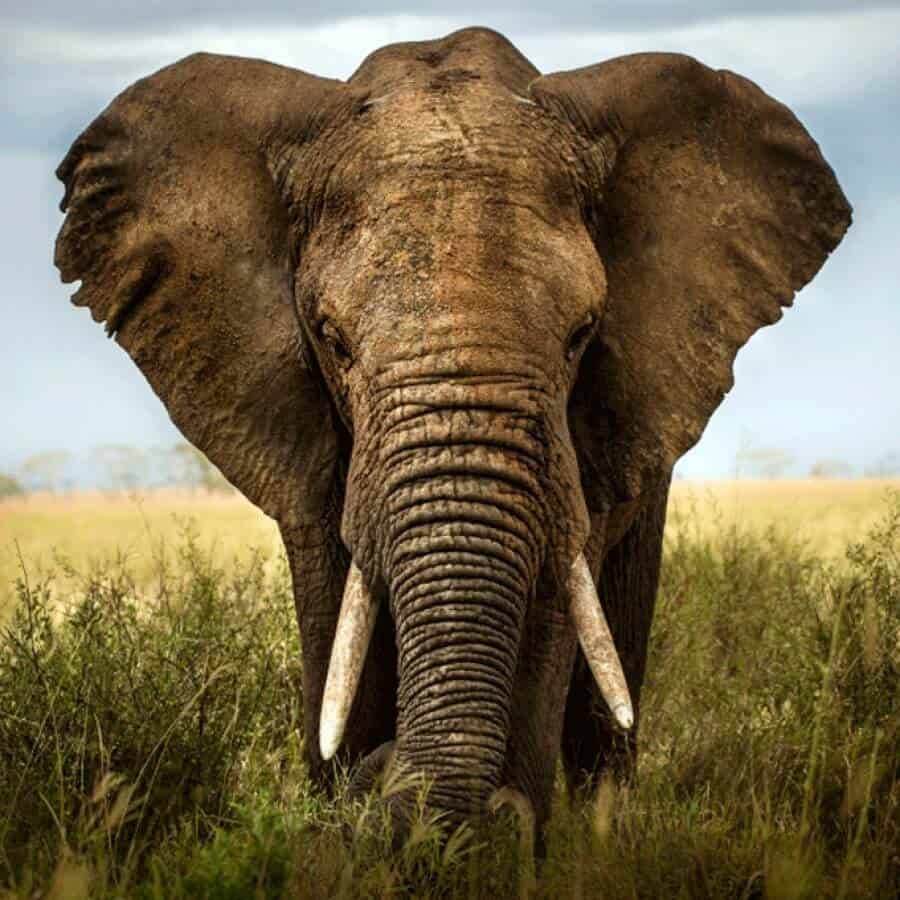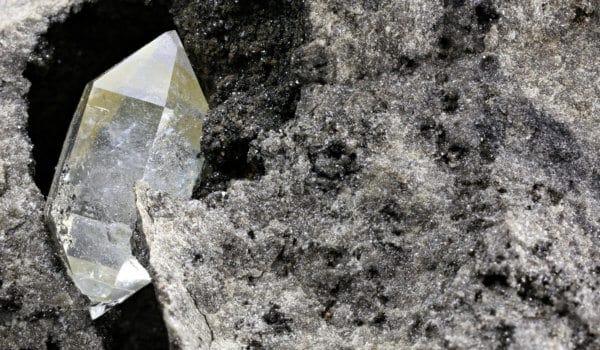In the past few weeks, wildlife enthusiast Leigh Woods has introduced you to some of the planet’s most weird and wonderful creatures and provided tips on where to spot them in their natural habitat.
So far, we’ve looked into several different families that wander and roam the lands and seas of this world including big cats, great apes and cetaceans to name a few.
In this edition, we delve into the giants of the natural world. From megafauna roaming Africa’s vast savannas to the critters that lurk the forest undergrowth, discover more about the goliaths of each taxonomic class and learn where to best locate them.
Largest Land Mammal: African Bush Elephant

The African Elephant has been classified into two subspecies, namely the African Bush Elephant and the African Forest Elephant. The former is the largest terrestrial animal on earth with the latter in third – after the Asian Elephant. With an average height of 3.3 metres and a mass of 6 tonnes, the African Bush Elephant towers over all others in the family. The largest elephant ever recorded was a bull (male) in Angola. He weighed in at 11 tonnes, and was nearly a meter taller than the average elephant. Due to illegal poaching for their ivory, habitat destruction, and human-wildlife conflict, elephant numbers have dwindled over the past few centuries making them vulnerable to extinction. Among the best places to witness the African Bush Elephant in its natural habitat are the Okavanga Delta, Botswana and the Addo Elephant Park in South Africa.
Largest Marine Mammal: Blue Whale

Not just the largest of all marine mammals, but claiming the title of largest creature ever to inhabit the Earth, the Blue Whale can grow to lengths of up to 30 metres and weigh up to 180 tonnes. Comparable in size to a small car, they have the largest heart of any animal and possess tongues that can weigh more than an elephant! Due to commercial whaling, their numbers depleted significantly throughout the 19th and 20th centuries, but their population has steadily increased since being protected worldwide from 1966. The IUCN estimates the Blue Whale population at between 10,000 – 25,000 individuals with the best chances of observing these colossal beasts off the coast of Dondra Point in Sri Lanka.
Largest Bird: Ostrich

The largest of all birds by some distance, the Ostrich can grow up to 2.8 metres in height and weigh close to 145kg (that’s the weight of two average adult humans!). To add to its repertoire, they also boast the fastest land speed of any bird – reaching speeds of up to 70 km/h – and lay the largest eggs of any living bird. Furthermore, along with the largest squids in the ocean, they have the largest eyes in the entire animal kingdom. Females tend to be about 2/3 the size of males and sport a brown/grey plumage with the males exhibiting black and white feathers. It is thought to be a camouflage technique to evade predators during breeding season whereby the female will sit on the eggs during the day, with the male taking on the responsibility at night. For the best chances of spotting them in the natural environment, head to Oudtshoorn, South Africa which has been aptly named the Ostrich capital of the world.
Largest Reptile: Saltwater Crocodile

The Saltwater Crocodile is a prehistoric looking reptile that is also known as the estuarine crocodile, sea crocodile, and more informally, saltie. The males grow up to sizes that far exceed that of females, typically reaching up to around 5-6 metres in length and weighing nearly a tonne. Owing to their ability to dwell in a wide range of habitats, these menacing characters have the broadest distribution of any extant crocodile species. In fact, their range spans from the eastern coast of India through to northern Australia. Well known Saltwater Crocodile hotspots include Daintree River in Far North Queensland, and Cahills Crossing, Kakadu National Park, Northern Territory – both located in Australia. Always practice extreme caution when heading out to spot these highly aggressive critters.
Largest Bony Fish: Mola Mola

The largest of all fishes is actually the cartilaginous whale shark, but since we’ve already covered this species in the Fantastic Beasts series, we decided to shed some spotlight on the largest of the bony fish – the Mola Mola, or, Ocean Sunfish. These odd looking marine animals are often as tall as they are long, with specimens growing up to 3.2 metres in height! The weight of mature Mola Mola can differ greatly, ranging between 250kg to a tonne. Due to the high levels of bycatch observed in many fisheries around the world, Mola Mola has been listed as vulnerable on the IUCN Red List. Their range is circumglobal and there are many operators that offer the chance to dive with Mola Mola, including those based in the Nusa Penida, Indonesia and Oban, Scotland. The Galapagos Islands are also well known for spectacular diving experiences with these gigantic ocean dwellers, among other aquatic animals.
Largest Amphibian: Chinese Giant Salamander

The most vulnerable to extinction of all animals in this article and the largest of all amphibians, the Chinese Giant Salamander is considered “a living fossil”. Endemic to rocky mountain streams and lakes in China, their numbers have fallen by as much as 80% since the 1950s due to pollution, habitat loss, and use in traditional Chinese medicine. As most Chinese Giant Salamander stop feeding at water temperatures exceeding 20 °C, the species is also highly vulnerable to the effects of global warming. While they rarely reach such lengths in the present day, the Chinese Giant Salamander has been known to grow to as long as 1.8 metres and reach up to 50kg! Spotting them in the wild is a tall order, but doing so would likely happen in the basins of the Yangtze, Yellow and Pearl Rivers within China.
Largest Insect: Wētāpunga

Unless you’re a diehard entomologist, you probably won’t be planning a trip to spot the world’s largest insect, the wētāpunga any time soon. Endemic to the arboreal forests situated on Little Barrier Island off the coast of New Zealand, these giant crickets can reach lengths up to 7.5 cm and weigh more than a small sparrow! They are heavily predated on by birds (especially saddlebacks) and kiore rats, and in tandem with their restricted distribution this has led them to become listed as a vulnerable species on the IUCN Red List. Note that the heaviest insect in the world is the Goliath Beetle.
Largest Arachnid: Goliath Birdeater

The Goliath Birdeater is the thing of nightmares for any sufferer or arachnophobia. These enormous blond tarantulas are largest arachnids both by size and weight but second to Laos’ giant huntsman spider by leg-span. The Goliath Birdeater boasts a body length of up to 11.9 cm and can weigh as much as 175g. Their fangs are long enough to penetrate human skin, but seldom do they attack people and when they do, it is almost always in self defence. Further, despite carrying venom it is relatively harmless to humans, comparable to that of a wasp sting. Their diet consists mainly of large arthropods, worms and amphibians, but they have been known to prey on rodents, lizards, snakes, and, as their name suggests, birds! The Goliath Birdeater lives in deep burrows found in marshy and swampy areas of the Amazon Rainforest in northern Brazil and southern Venezuela. However, you’re more likely to find this nocturnal critter dead and served as part of the local cuisine!
Largest Crustacean: Japanese Spider Crab

Not just the largest of all crustaceans but the biggest arthropod (insects, arachnids, myriapods, and crustaceans) that scuttles the planet, the Japanese Spider Crab can reach up to 5.5 meters from claw to claw and weigh as much as 19kg. Adults are found at depths between 50-600 meters below the water surfaces off the southern coasts of the Japanese island of Honshū, making the species very difficult to observe in the wild. In fact, the only chance you’re ever likely to encounter them in the wild is when they are unrecognizable – shortly after hatching. You may well have brushed past thousands of Japanase Spider Crabs without even knowing it if you’ve ever gone swimming in the waters off the coast of Japan!
Other Natural World Giants
- Tallest animal: Maasai Giraffe (5.5 metres/1.2 tonnes)
- Largest land carnivore: Polar Bear/Kodiak Bear (3 metres/450kg)
- Largest marine carnivore: Sperm Whale (12 metres/57 tonnes)
- Largest fish: Whale shark (12.5 metres/21.5 tonnes)
- Largest mollusk/invertebrate: Colossal Squid (14 metres/495kg)
- Largest wingspan: Wandering Albatross (3.65 metres)
- Heaviest flying bird: Kori Bustard (18kg)
- Longest marine animal: Lion’s Mane Jellyfish (55 metres)
- Longest land animal: Reticulated Python (7.67 metres)
Photos Shutterstock / Graphics by Leigh Woods
Support us!
All your donations will be used to pay the magazine’s journalists and to support the ongoing costs of maintaining the site.
Share this post
Interested in co-operating with us?
We are open to co-operation from writers and businesses alike. You can reach us on our email at [email protected]/[email protected] and we will get back to you as quick as we can.









